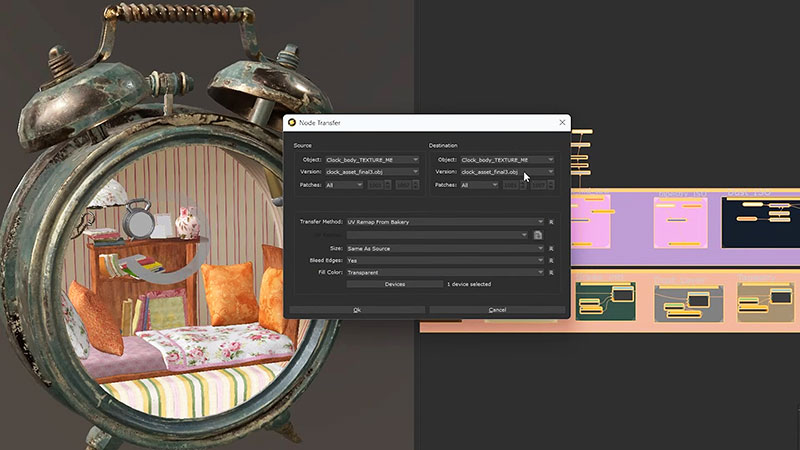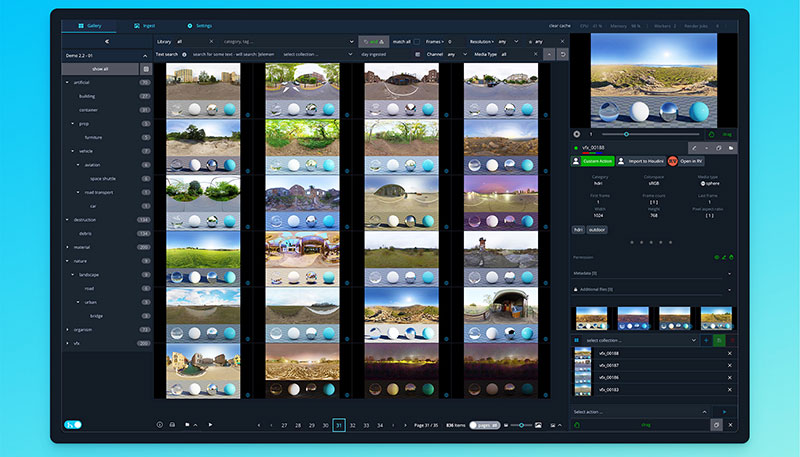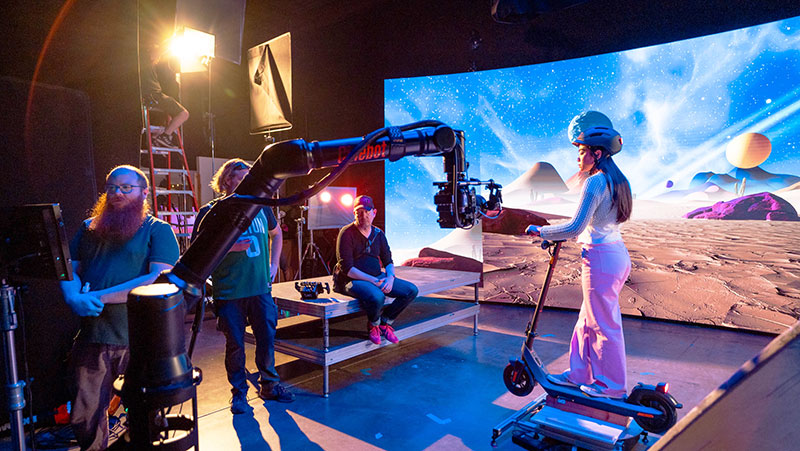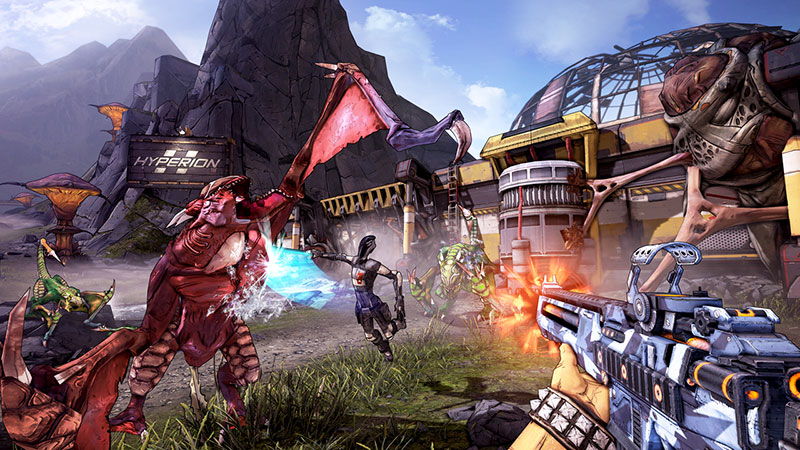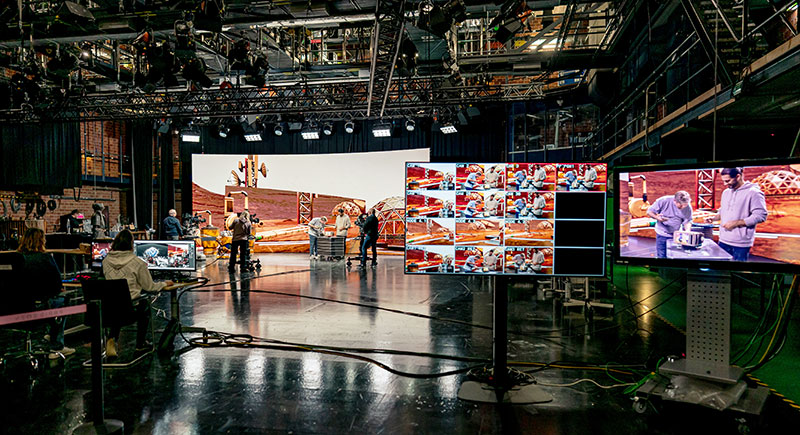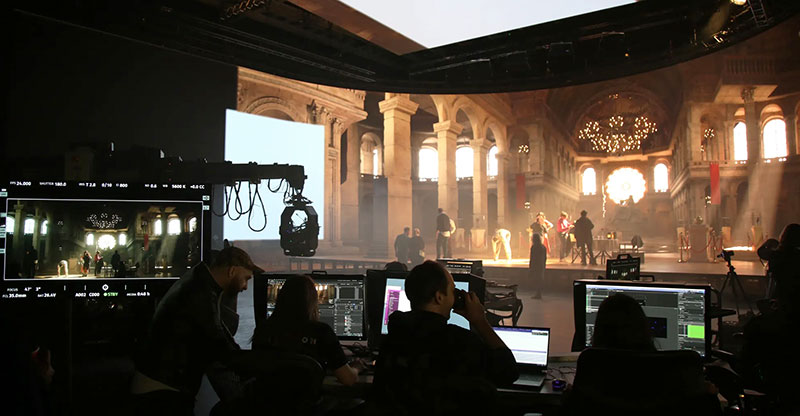Maxon One’s new 2023 release updates all software including Cinema 4D, Red Giant, Redshift and ZBrush, with new Capsules and a Cineware integration tool that support working with Unreal Engine.
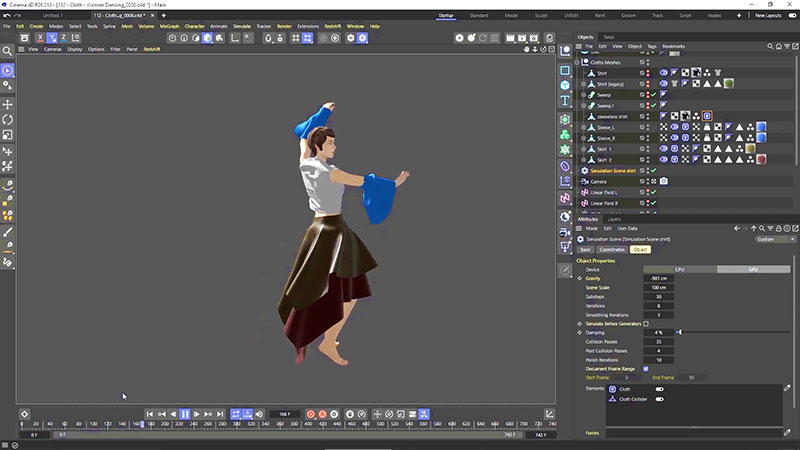
Cinema 4D's Unified Simulation System - cloth.
Updates in the new 2023 Maxon One release make changes to all of the applications including Cinema 4D 3D modelling and animation, Red Giant looks tools, Redshift renderer and ZBrush sculpting software. There are additions to Capsules, Maxon’s collection of ready-made assets, mocap clips, models, shaders, materials and presets, and updates to the Cineware integration tool that support working with Unreal Engine.
Cinema 4D Modelling and Motion
Cinema 4D’s tool organiser Commander now gives easier access to Maxon Capsules as well as your own assets and presets. Users can discover and apply Capsules, add Redshift materials and take better advantage of Maxon’s Node-Based Capsules like Backdrop primitive and Spline tools.
A new Thicken Generator adds extra dimension to models, which is useful when setting up floorplans and 3D prints to understand how a real, physical object will fit into an environment. It generates a procedural shell based on the existing mesh, to add bulk while preserving corners and perpendicular edges. It can be used in various ways due to its support for vertex maps and polygon selections.
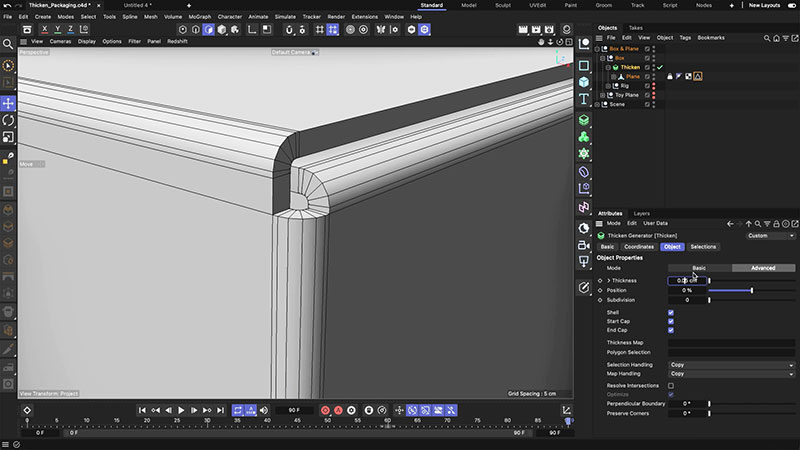
Thicken Generator
The Cinema 4D now has a Node UI with a cleaner design to help navigate nodes setups. Its interface uses more prominent colour-coding, for example, to make it easier to work with nodes and create efficient node-based capsules.
Cinema 4D’s Unified Simulation System, a highly multi-threaded CPU/GPU system for realistic simulations that incorporate multiple objects with different simulation characteristics, received several improvements. Pyro previews in the viewport now support colour and lighting, which is useful when setting up a sim or sharing a high-resolution preview render. Emitters now support Maxon Noise and vertex maps, and the Destructor Force limits Pyro to the inside or outside of a box. Pyro Output generates automatically for Redshift renders and can be switched between Simulation Scenes. Balloon simulations also now support vertex maps, allowing you to create seams and control areas of inflation.
Red Giant Looks and FX
Real Lens Flares
Universe
Universe 2023.1 introduces Symbol Mapper, a new stylisation tool developed to rebuild footage using letters, numbers and symbols instead of textures, based on source brightness values. The results recall Matrix-style effects and retro type-based graphics.
New presets for various Universe tools are now available via the Dashboard and preset browser giving access to Maxon’s Cloud Capsule Service, with a growing library of assets including 42 new cloud presets for the Electrify, Line, Long Shadow, Prism, Displacement, and RGB Separation tools. To save time, a new search function helps you find the required tools and presets.
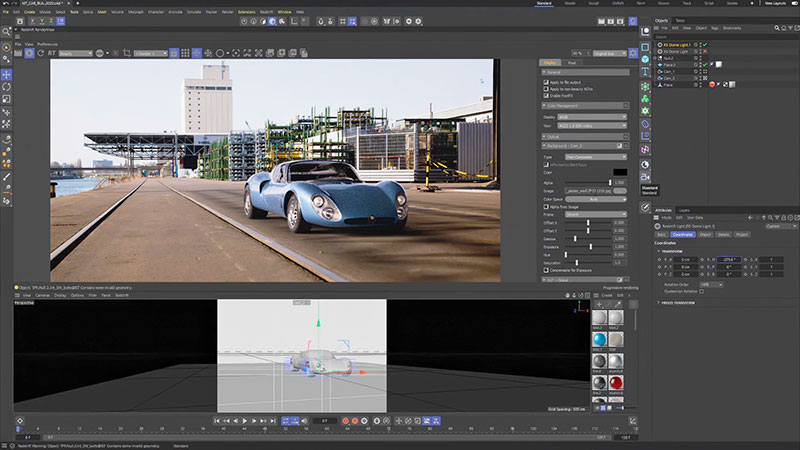
Redshift backplates
VFX
VFX 2023.3 has an upgraded lens simulation engine in the Real Lens Flares plug-in with anamorphic lens support that can be used to apply lens flares to 3D renders, video footage or motion graphics work. Users keep a high degree of artistic control while creating highly realistic looking lens flares.
The new engine simulates the optical qualities of a real lens and calculates the rays of light that bounce inside glass, maintaining enough accuracy to generate lens flares that move, morph and merge as the light source shifts across the screen.
The Supercomp plug-in for VFX composites in After Effects, now supports adjustment layers. They replace displacement layers and apply their effect to anything below them in the Supercomp, making them a good approach to region-based colour corrections, displacements and heat blur.
![]()
Trapcode Particular sprites
Trapcode
Trapcode 2023.3 optimises the performance for light emitters, making render times several times faster, and a new collection of Atomic Age sprites producing looks reminiscent of a mid-20th Century design aesthetic.
Magic Bullet
In Magic Bullet 2023.2, strength sliders for each individual tool now give better control over a look, and a new set of presets for the Looks plugin will take full advantage of the ACES workflow.
Redshift Renderer
Redshift 3.5.14 has a new PRG Clear Sky model that allows you to simulate sunsets with Redshift’s improved Sun and Sky, aiming for accurate simulation of sky radiance and colour. For instance, it reveals rich red sunsets as the sun dips below the horizon.
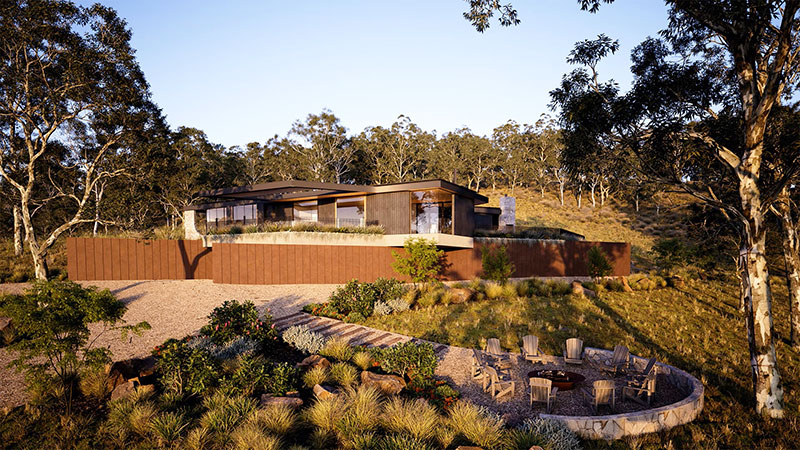
The Flakes 3D shader is for rendering looks ranging from metallic car paints to glittery superballs. It generates Voronoi- or dot- shaped flakes at random angles and surface depth to customise detail and shine in renders.
Custom Backplates are now available for Cinema 4D in Redshift and give users more compositing control. Artists can choose whether background footage is incorporated into the render or added before and after post effects. Renders can be matched to an existing backplate by using the Post-Composite mode.
The updated Node UI in Cinema 4D 2023.2 makes building Redshift materials more straightforward. The UI is much cleaner now, with new commands to select upstream and downstream nodes, and Cinema 4D’s Preset system can be used to apply favourite node settings. A new option to keep wire connections while duplicating a node helps users build networks quickly, with new pop-out panels that allow you to browse and add nodes, and edit their attributes.
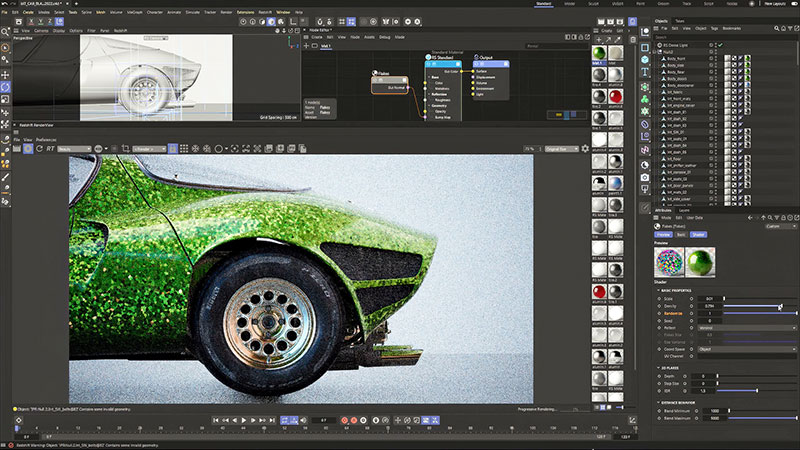
Flakes 3D Shader
The Redshift Camera is now available in Houdini, which means users have simple physical controls to modify exposure, focus distance, motion blur and bokeh.
ZBrush Sculpting
ZBrush sculpting software now has a new Proxy Pose feature with a dynamic method for modifying the topology of models quickly. Implementing Proxy Pose instantly reduces polygon density, making it faster and more efficient to manipulate a ZBrush model, which can then be converted back to a high-density mesh.
The new Drop 3D function combines the Sculptris Pro software with the 2.5D functionality of the ZBrush canvas to produce a new creative workflow. Using Drop 3D increases local mesh density in order to maintain high-resolution details specifically where they are needed and supports creative ideas by fusing the elements of both 2D and 3D design. It also allows the artist to explore design concepts aligned with illustration techniques, surface detailing and 3D modelling.
Capsules
Maxon continues to build up its list of Capsules. Among the newest are 16 Redshift carpet materials created by visualisation studio Fuchs and Vogel, 24 ceramic materials and a new Redshift Shaderball look development scene that artists can use to create good-looking material previews. Rocket Lasso has developed a new Swirl Modifier Capsule that acts like a deformer to produce twisted effects on a mesh or spline with diverse options for creating and art directing objects like ice cream cones and spinning vortexes.
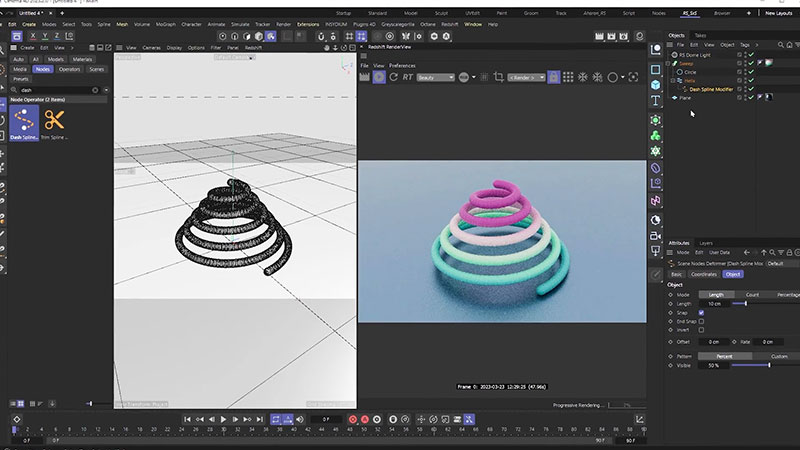
Cineware Integration
Cineware is a bridging tool for integrating files, assets and software into and out of Cinema 4D and other applications. In this release, the updates mainly relate to Unreal Engine 5.0 and 5.1. Importing Cinema 4D files straight into Unreal Engine using Cineware is made simpler by incorporating animated characters and cameras, and embedding them as part of a larger cinematic sequence in an Unreal project. When a Cinema 4D Viewport camera is imported into Unreal Engine, it retains the original configuration without extra modifications or camera settings.
Cineware now allows you to make distinct Level Sequences for Geometry Caches, or insert them directly into a main Level Sequence. A new Geometry Cache option allows you to import not only static meshes from Cinema 4D, but also morphing topology and animated MoGraph Cloner setups. Animated Render Visibility allows you to decide which components in your Cinema 4D scene are turned on or off in Unreal Engine after import. www.maxon.net






